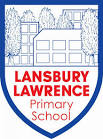Our theme, is Under the Sea. We have been learning all about sea creatures. On Monday morning we received a letter from The Scientists of Tower Hamlets. See below…
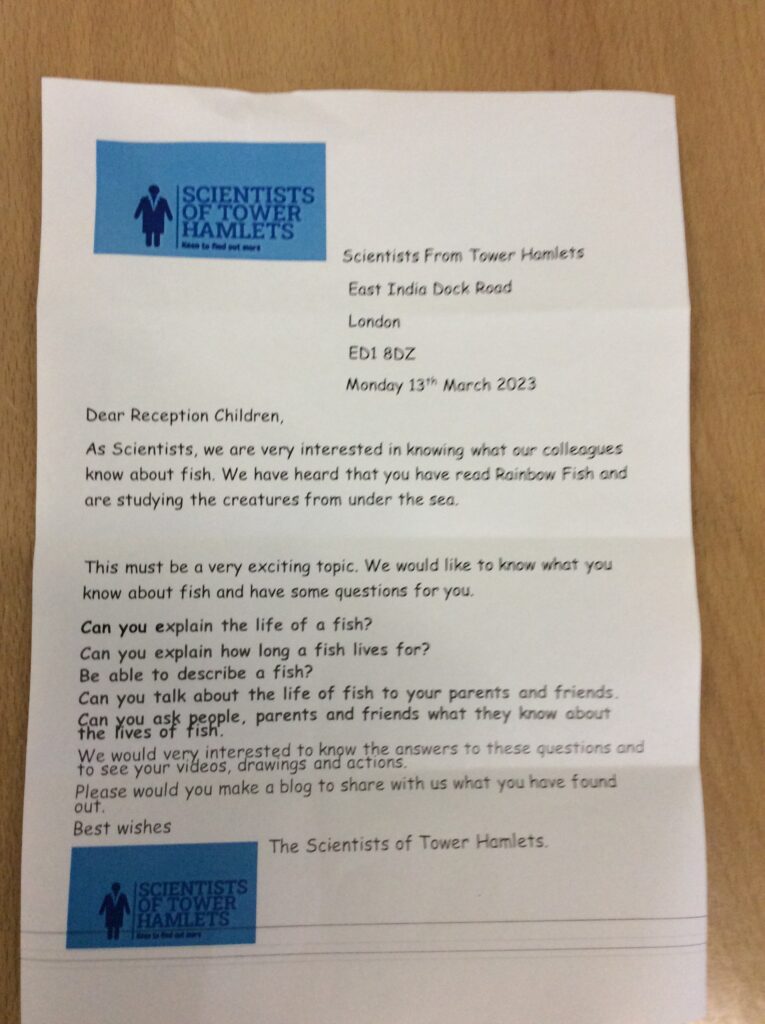
Dear Scientists, to begin, we looked at the human life cycle. This reminded us of the timeline we discussed earlier in the year. We could see that a baby starts as a foetus in the womb then goes through 7 stages of growth. Eventually, becoming an old person.
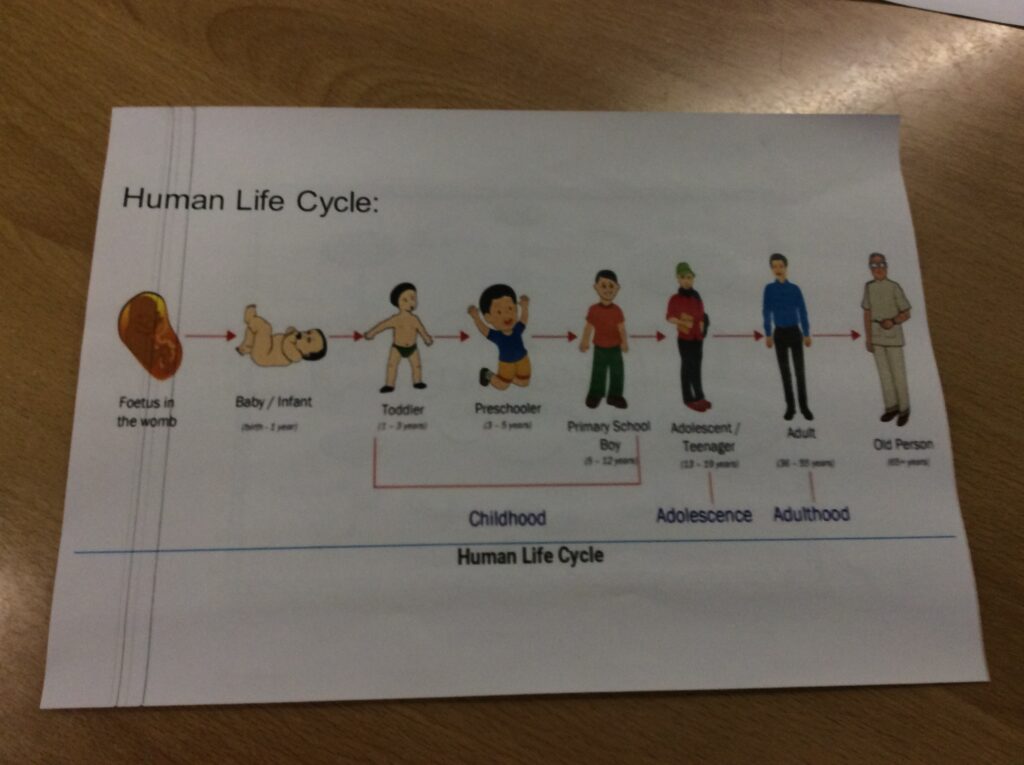
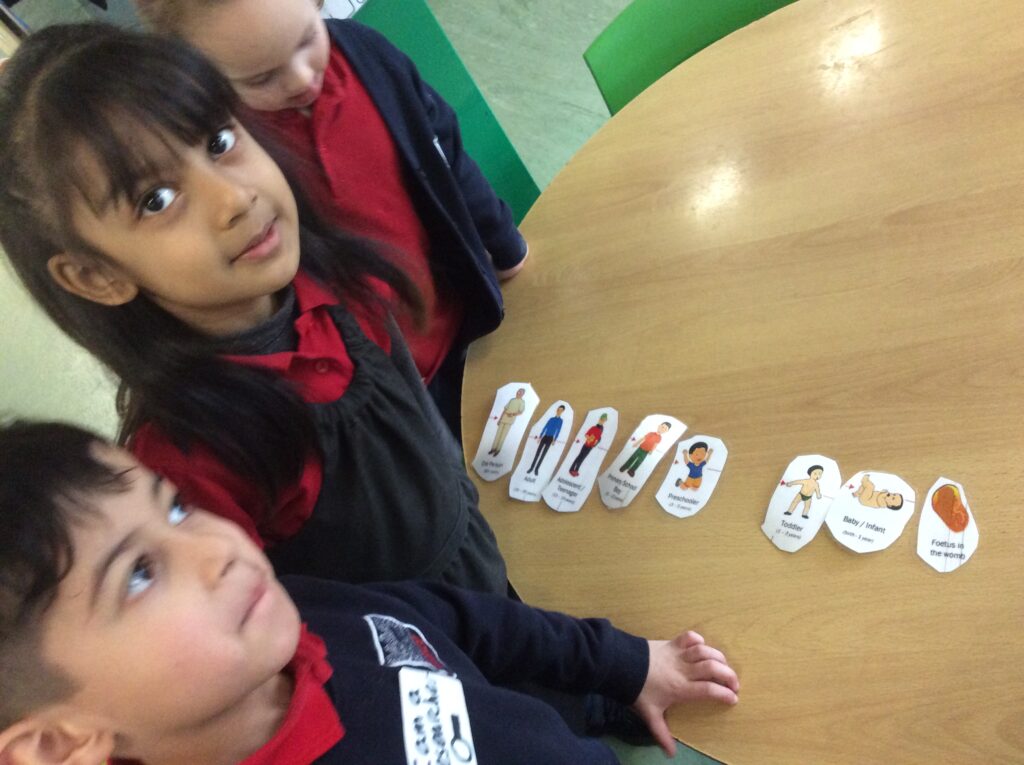
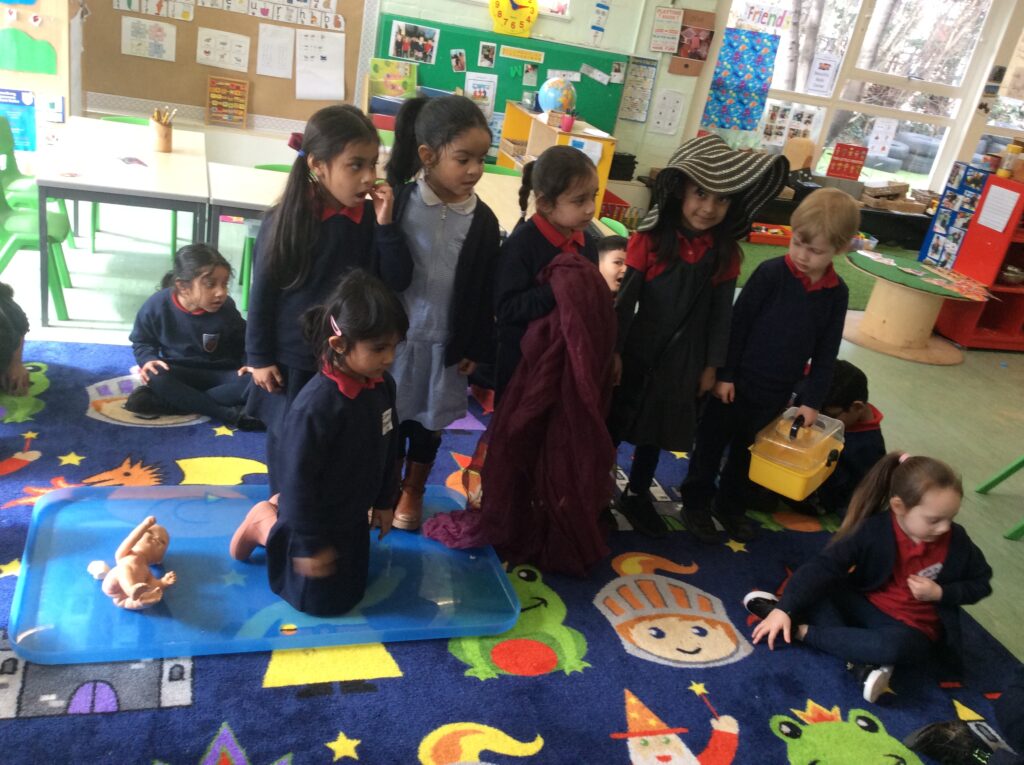
The children enjoyed learning about the life cycle of a human and could order the 8 stages of growth. The children enjoyed pretending to be a part of the life cycle.
We watched the video, what is a fish?
https://www.bbc.co.uk/bitesize/topics/z6882hv/articles/zt2kcmn
Next, we looked at the life cycle of a fish. Did the fish start as a baby or an egg?
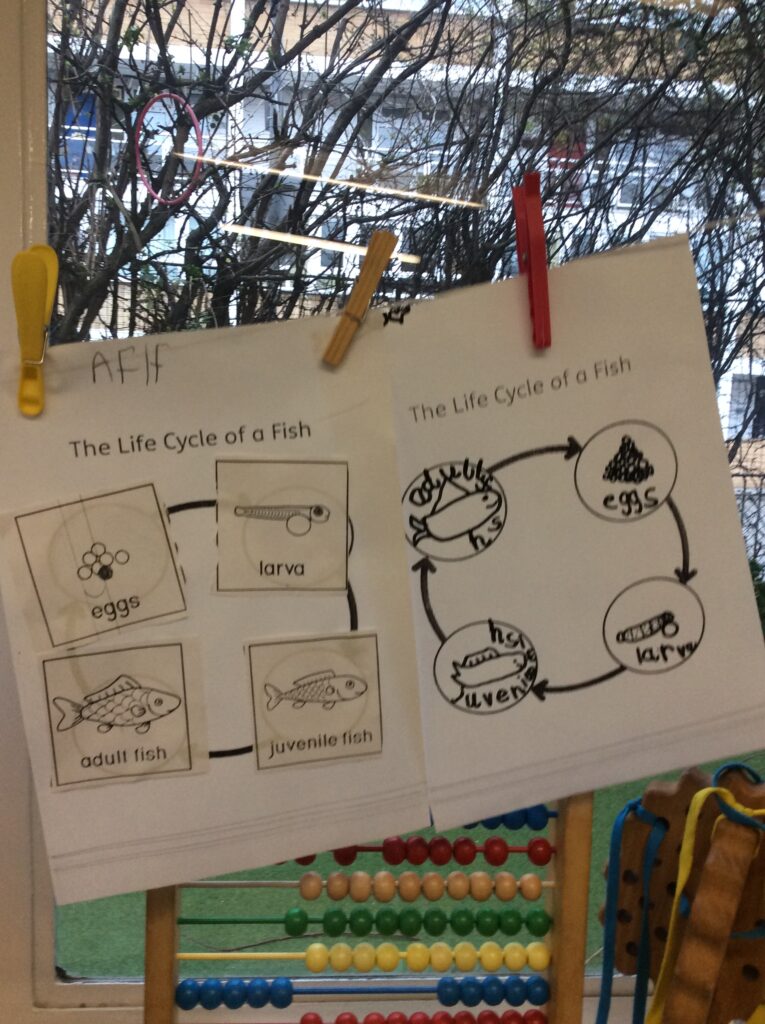
In the class, we made an Information station. This had a few life cycles; sunflowers, fish and birds. Plus we put a keyboard and ipad to aid our research.
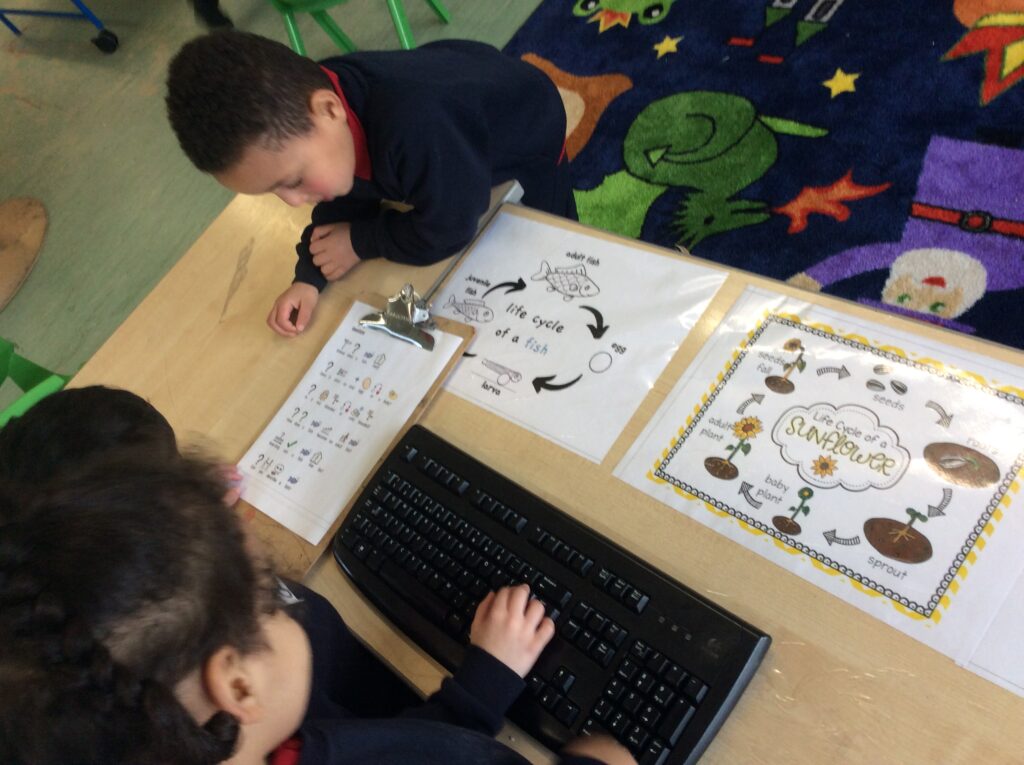
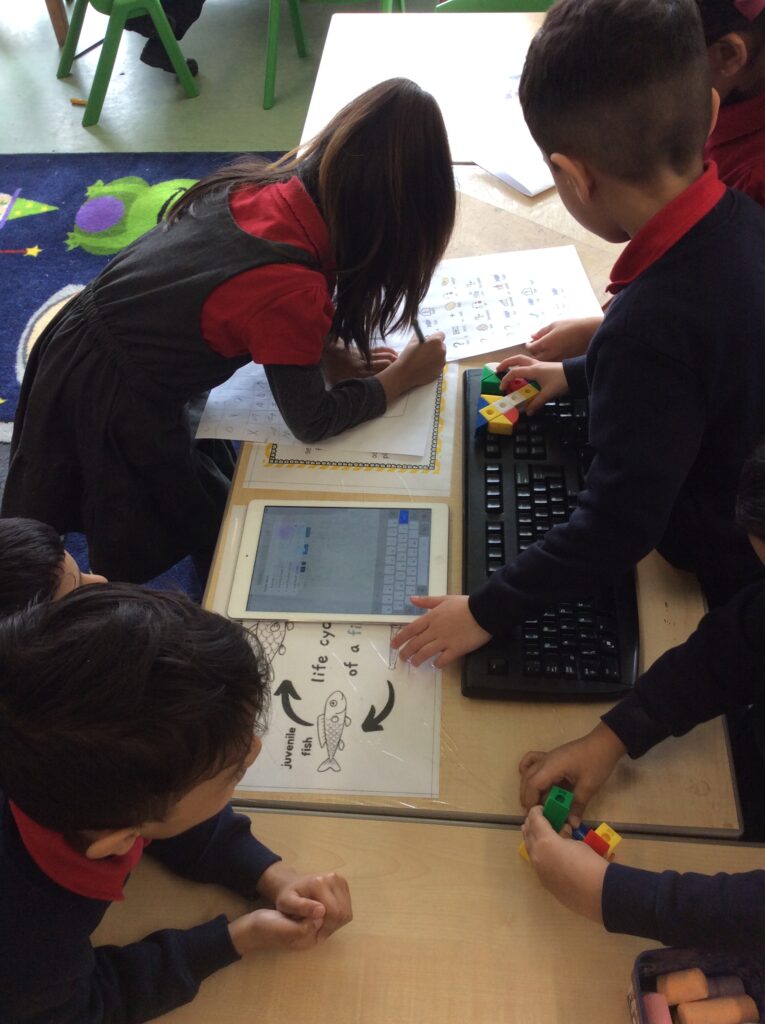
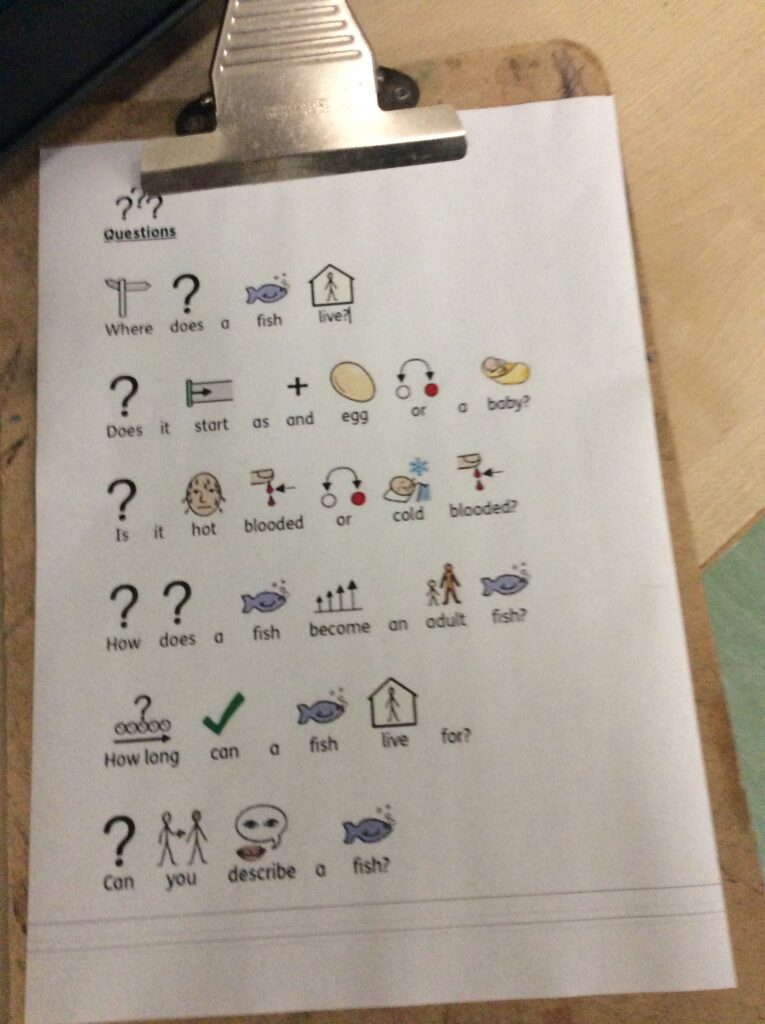
Question Time:
The children went around the learning space and asked the adults the questions about fish.
Where does a fish live?
Question Time:
To finish the blog for the Scientists, we all worked together to answer the questions. In our partners, we discussed the questions.
To be fair, Miss Glen pulled out a lolly stick name for each question. Miss Glen then typed the answers as we said them. Here are our answers:
What is the life of a fish?
Abdulrahman: First, it is an egg. Next, a lavae fish. Then a juvenile fish and finally an adult fish.
How long does a fish live for?
We found out the shortest life span is 8 weeks and the longest life span is 205 years.
Can we describe a fish?
Avni: Fish stay together in a school. They have scales on their body. Zayd: The fish have two eyes. Adam: The fish have gills to breathe and follow each other in schools. Ameer: A fish has babies. Afif: A fish grows up into an adult fish. Scarlett: A fish has gills. Jahiem: Fish have gills to breathe.
Here are our pictures of a fish describing their parts.
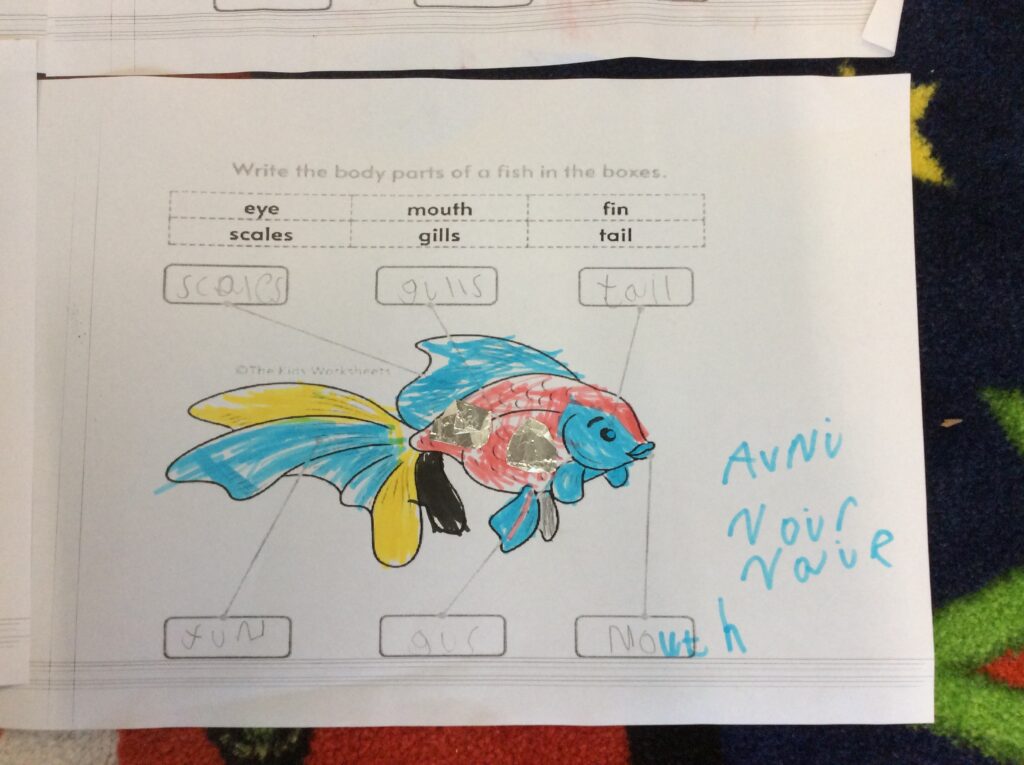
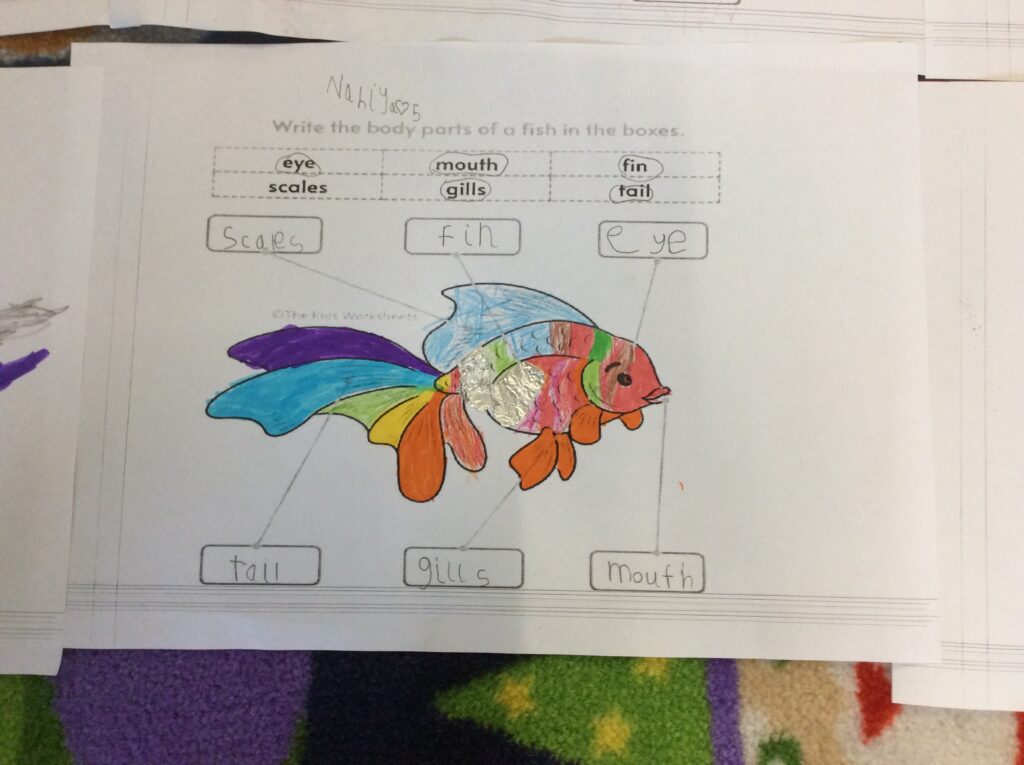
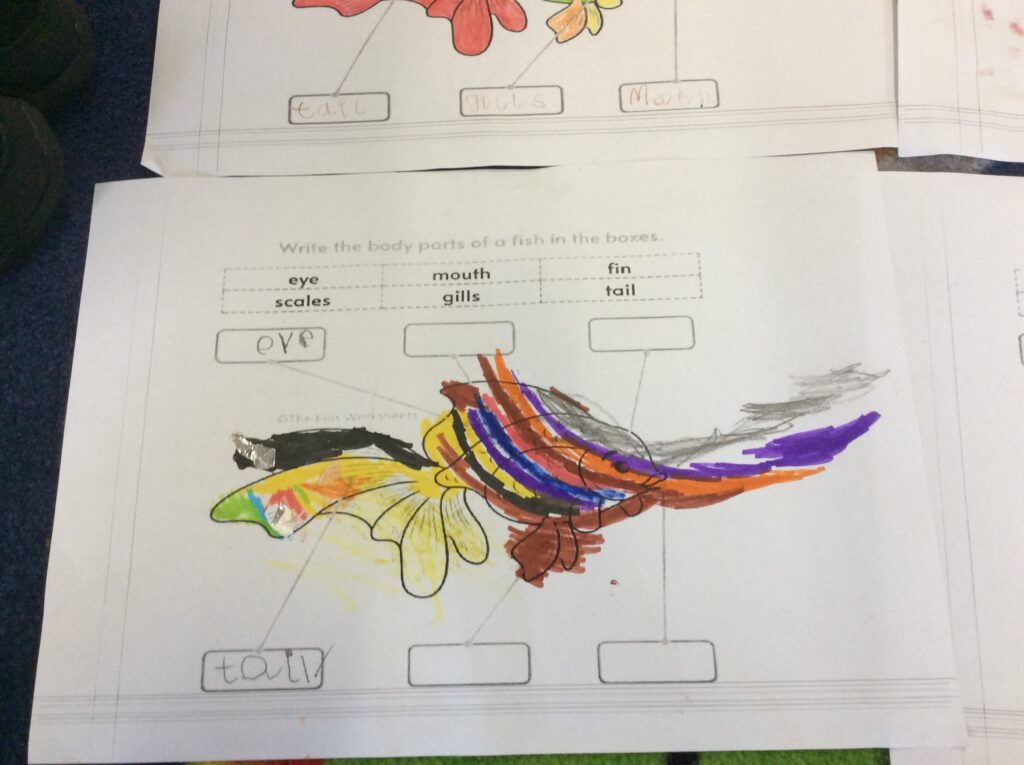
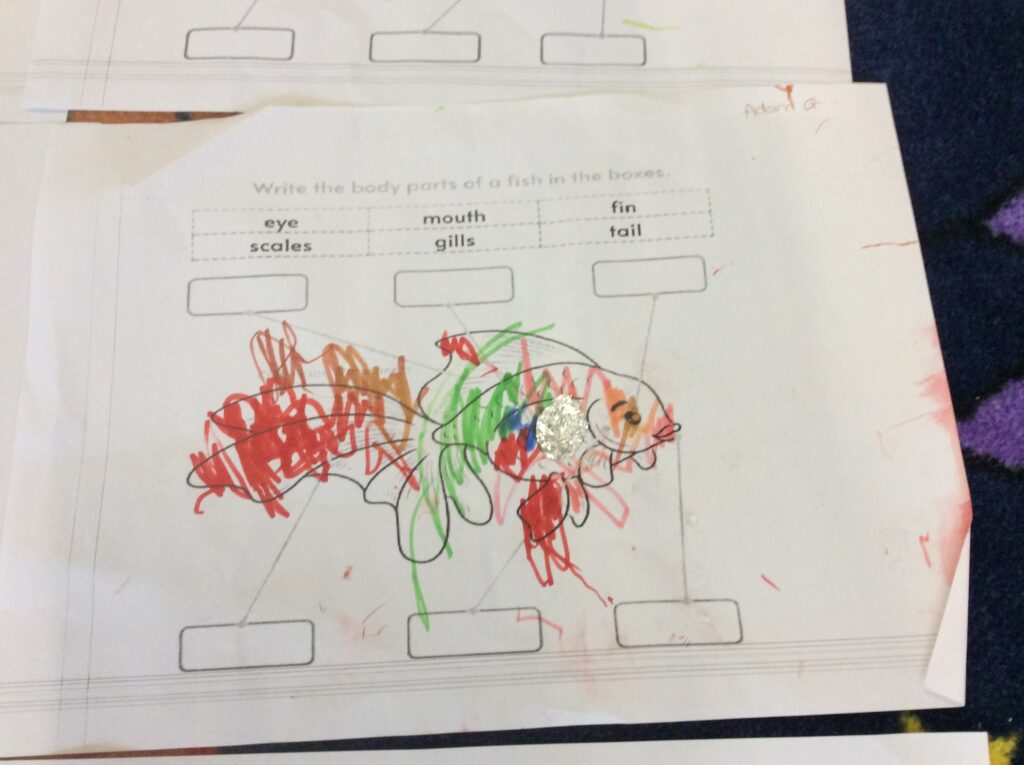
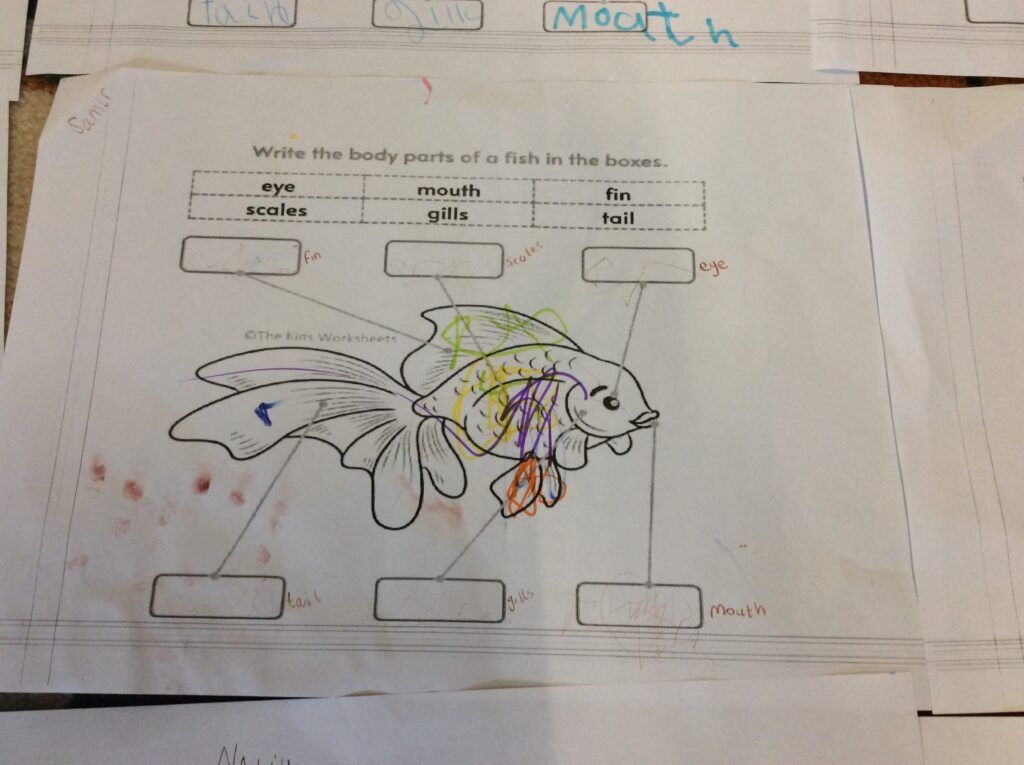
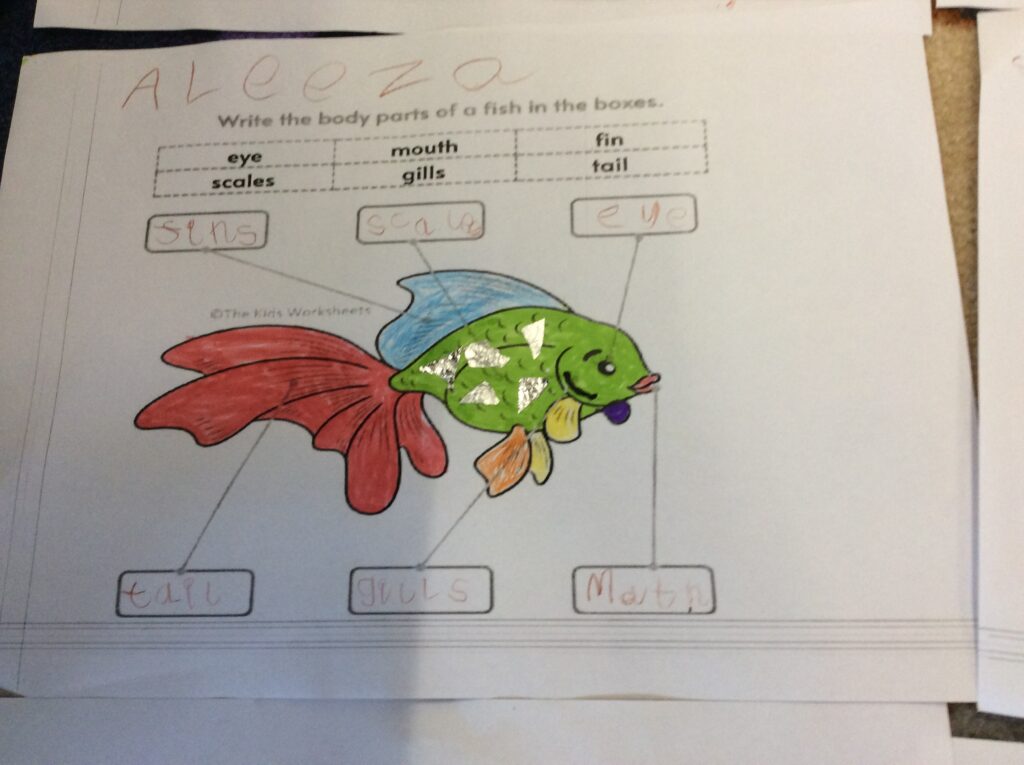
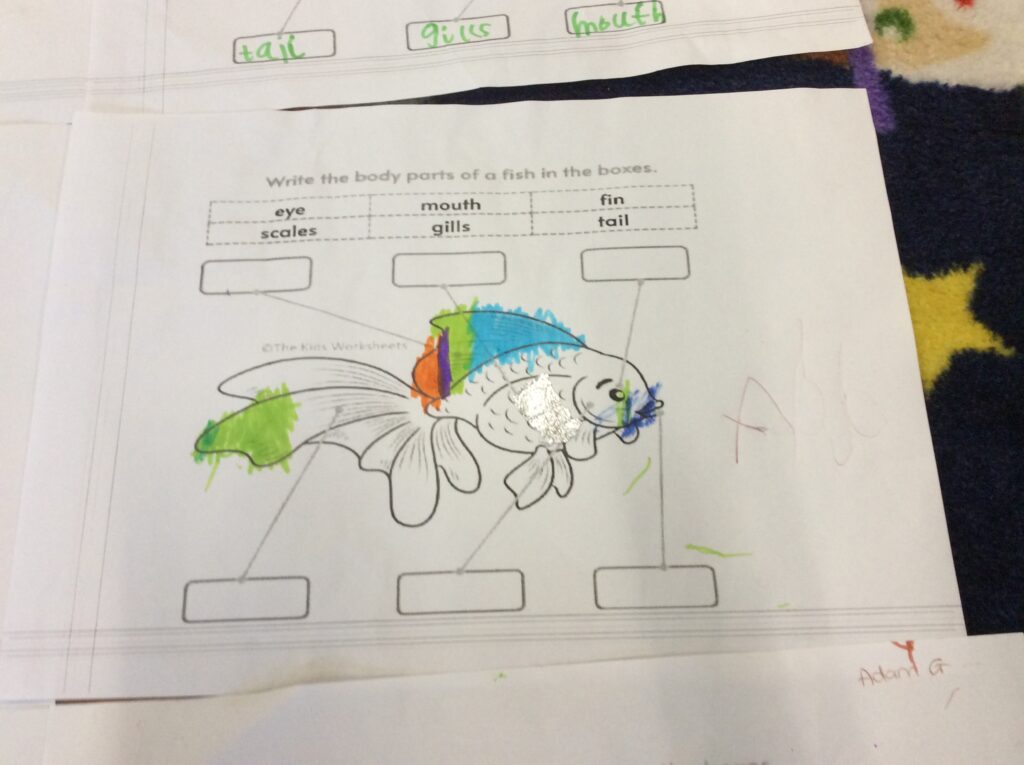
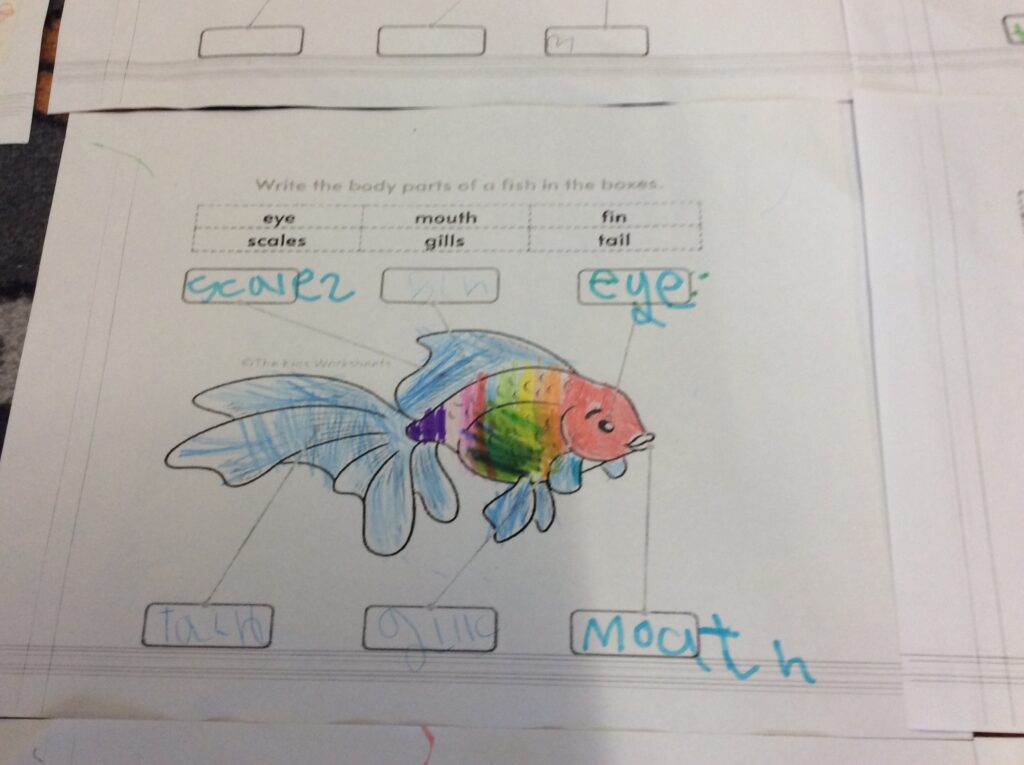
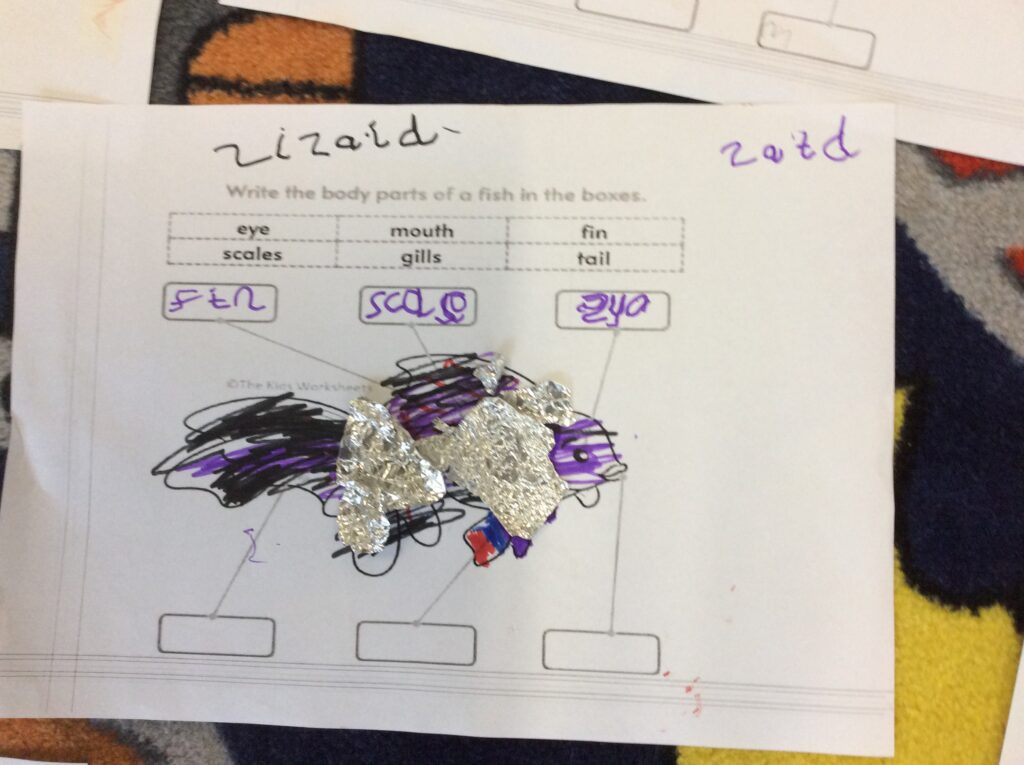
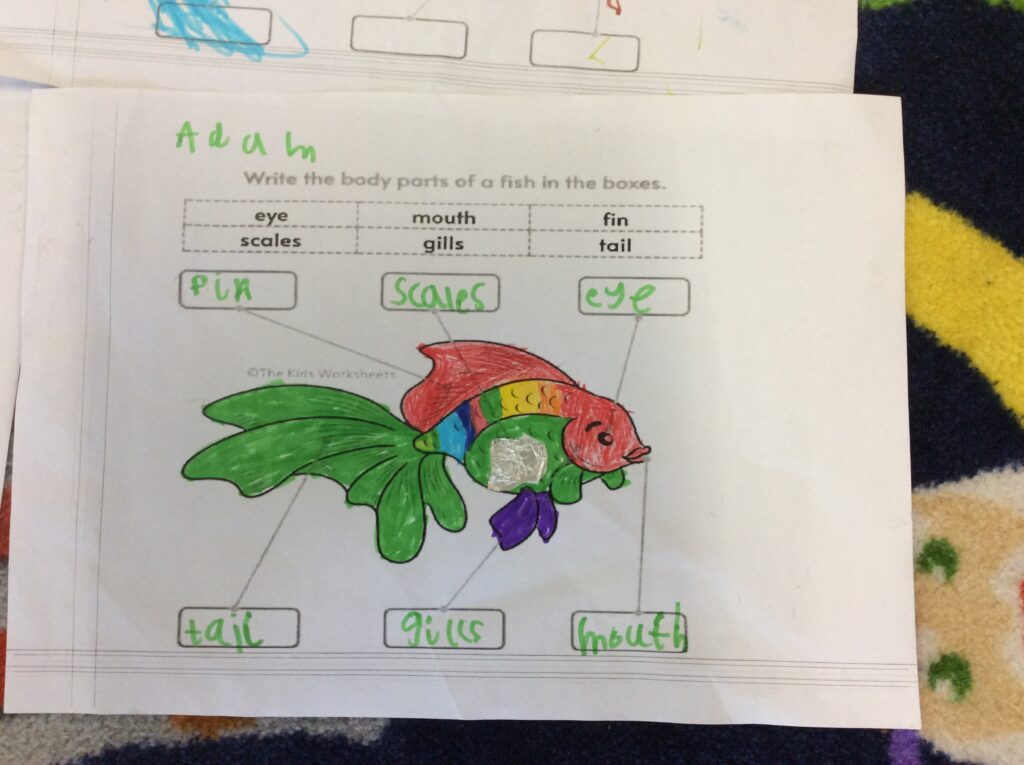
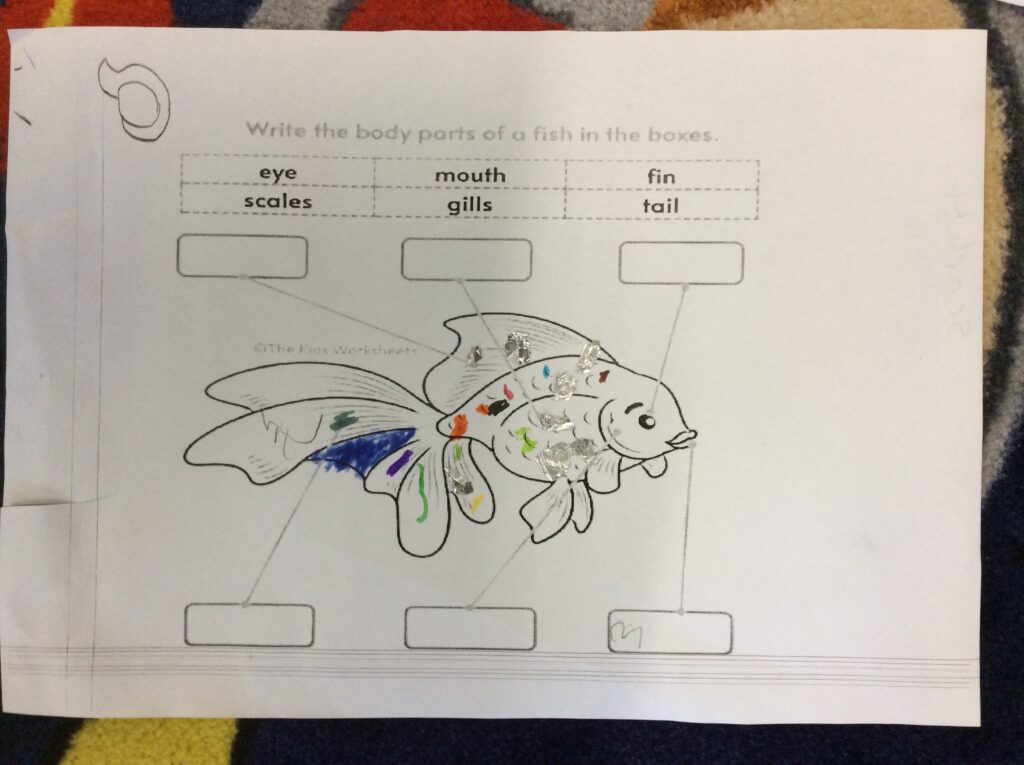

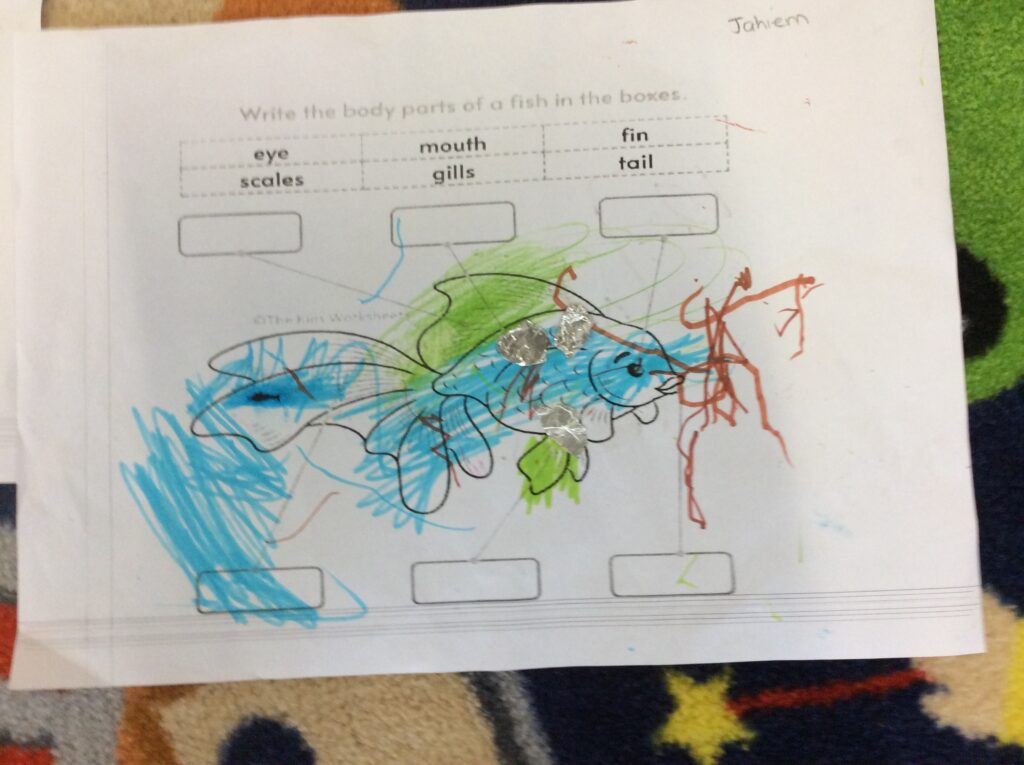
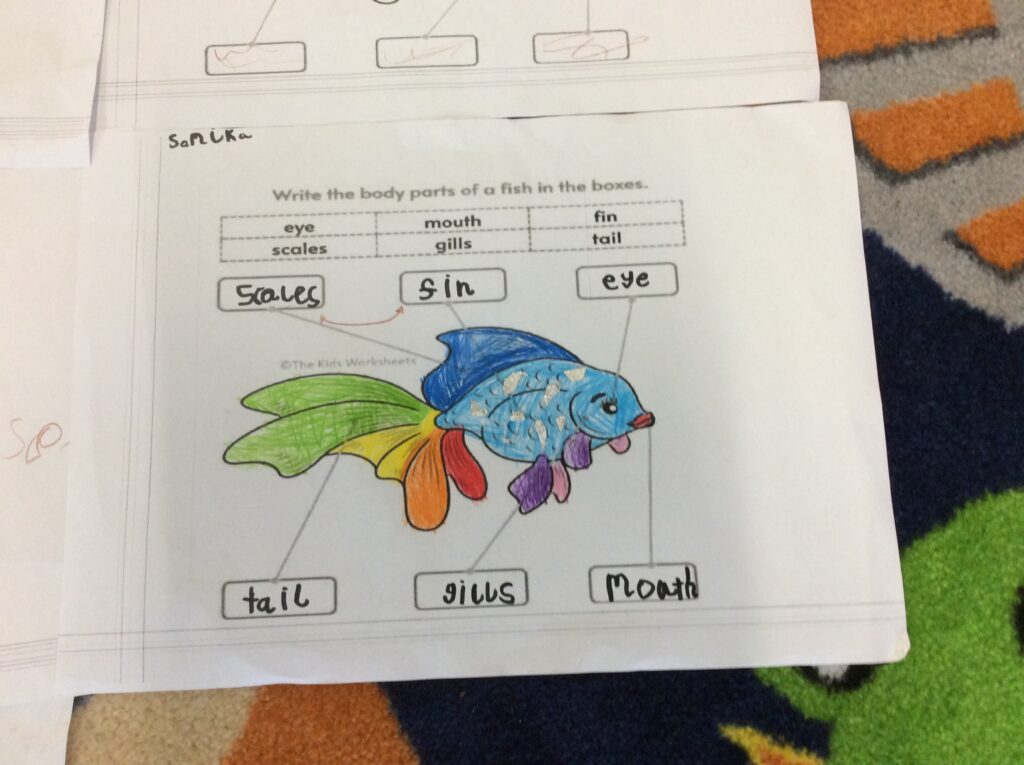
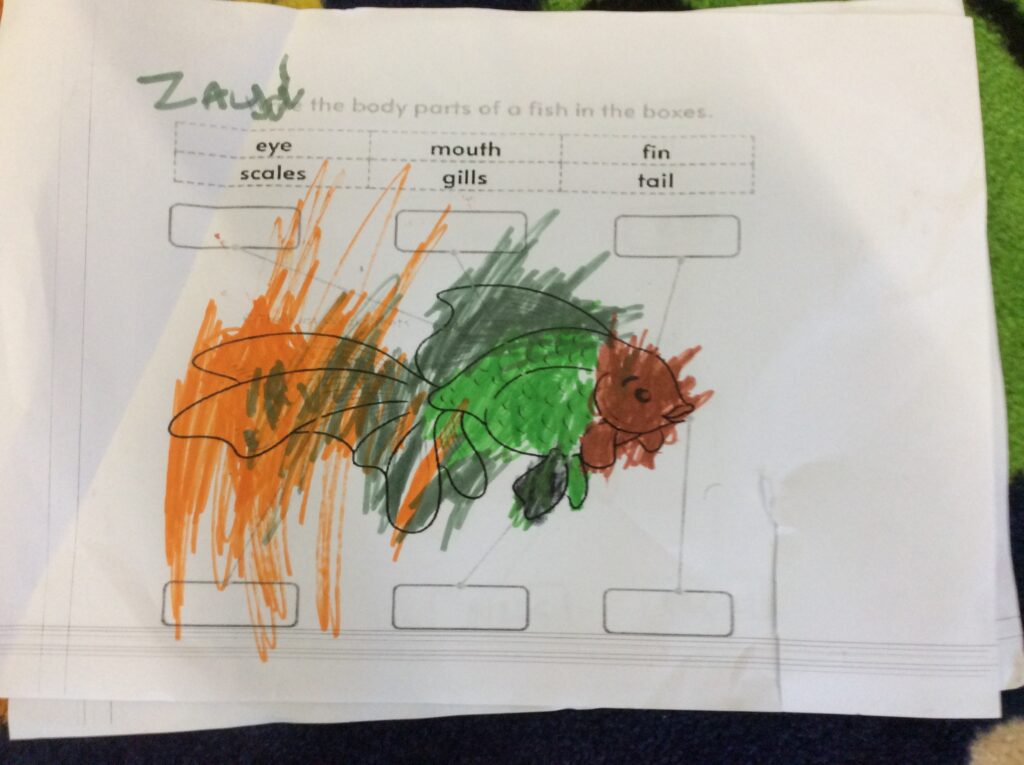
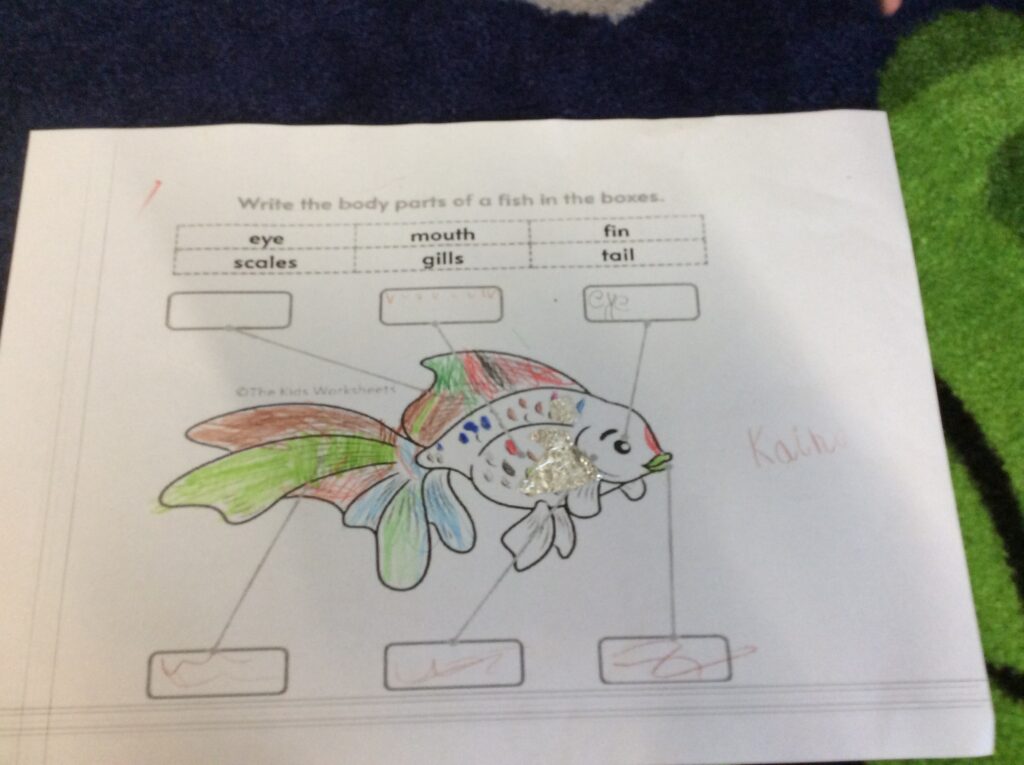
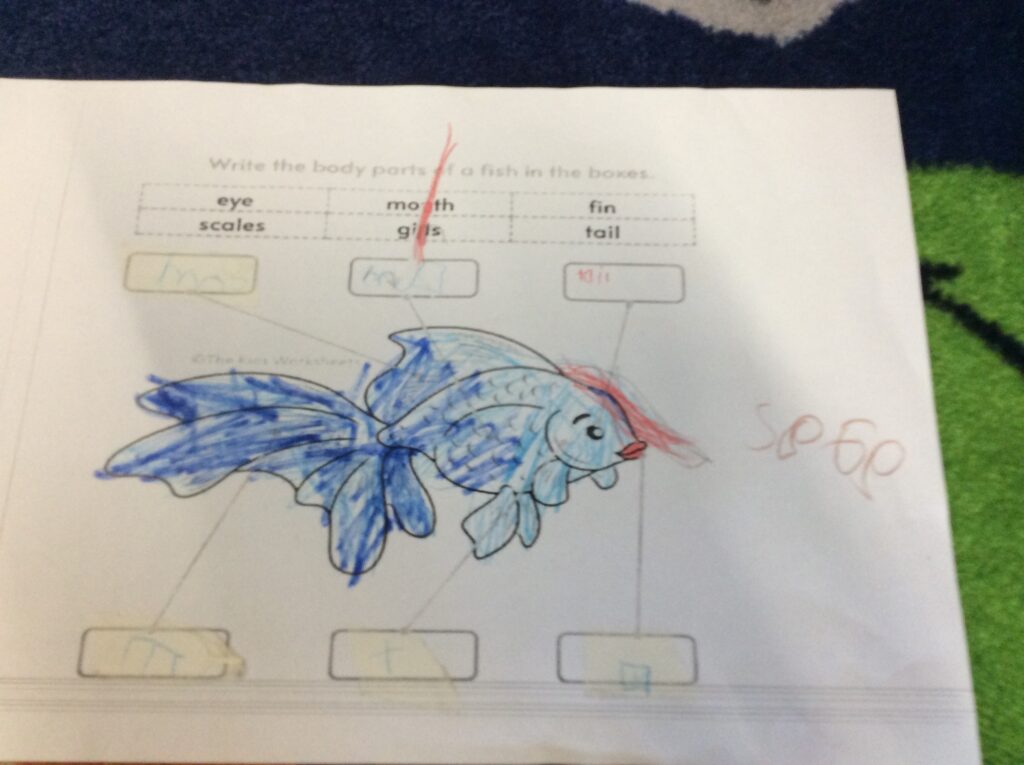

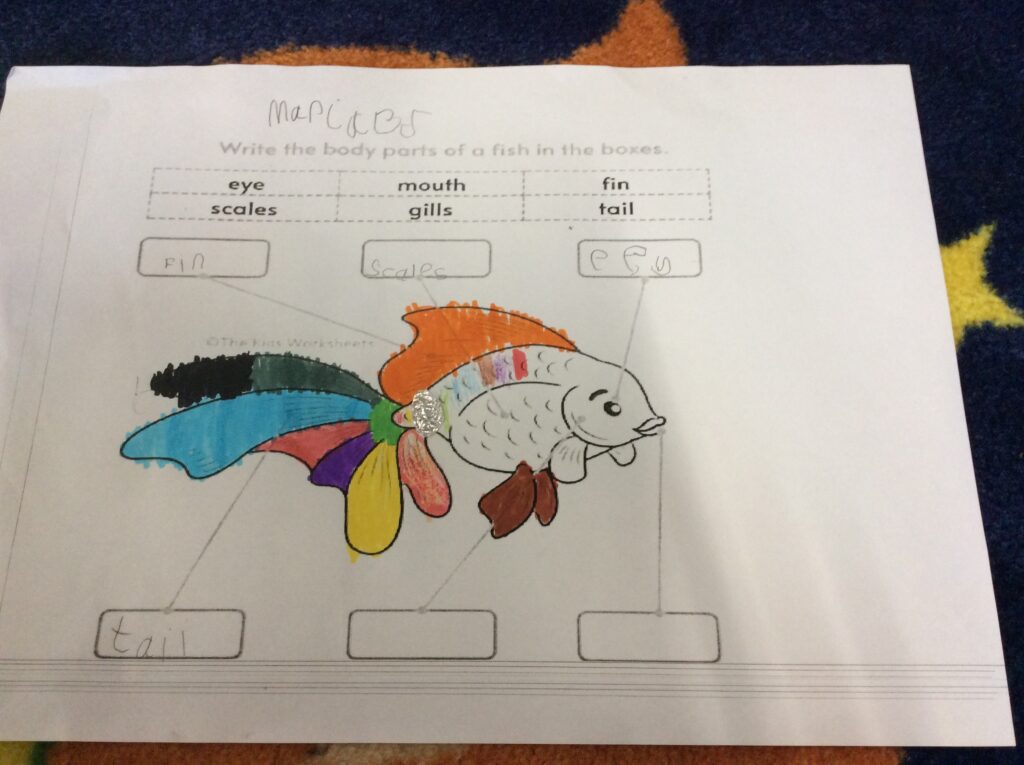


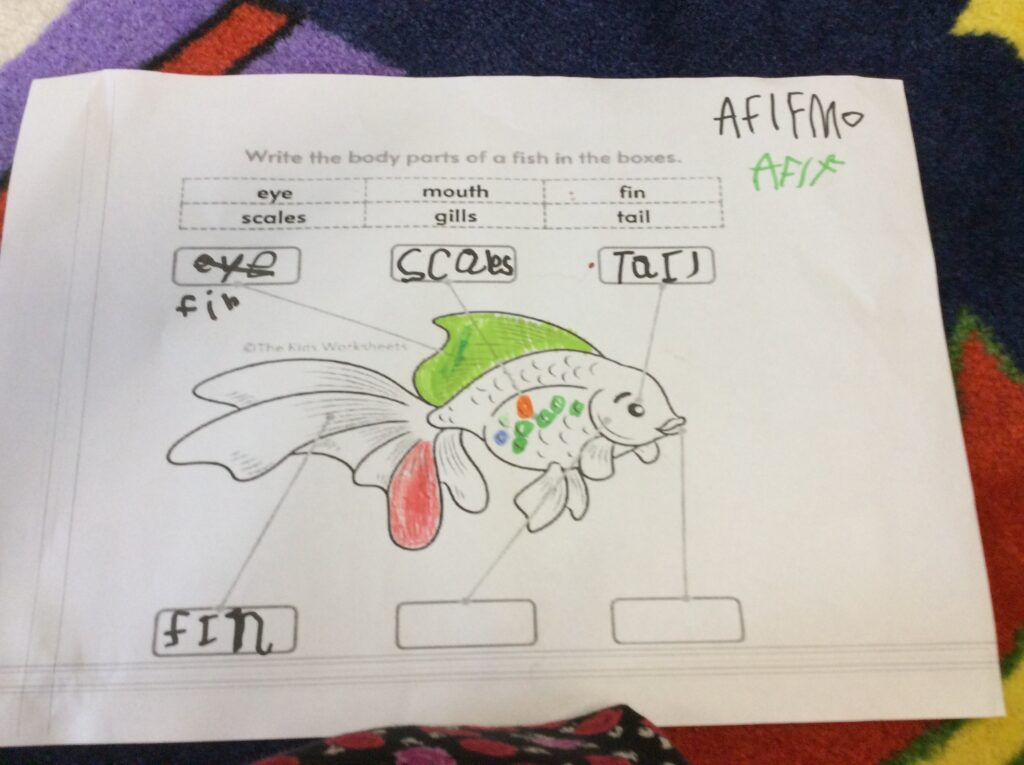
We hope you found our research informative. If you have any more questions please get in touch.
Kind regards Reception Children
